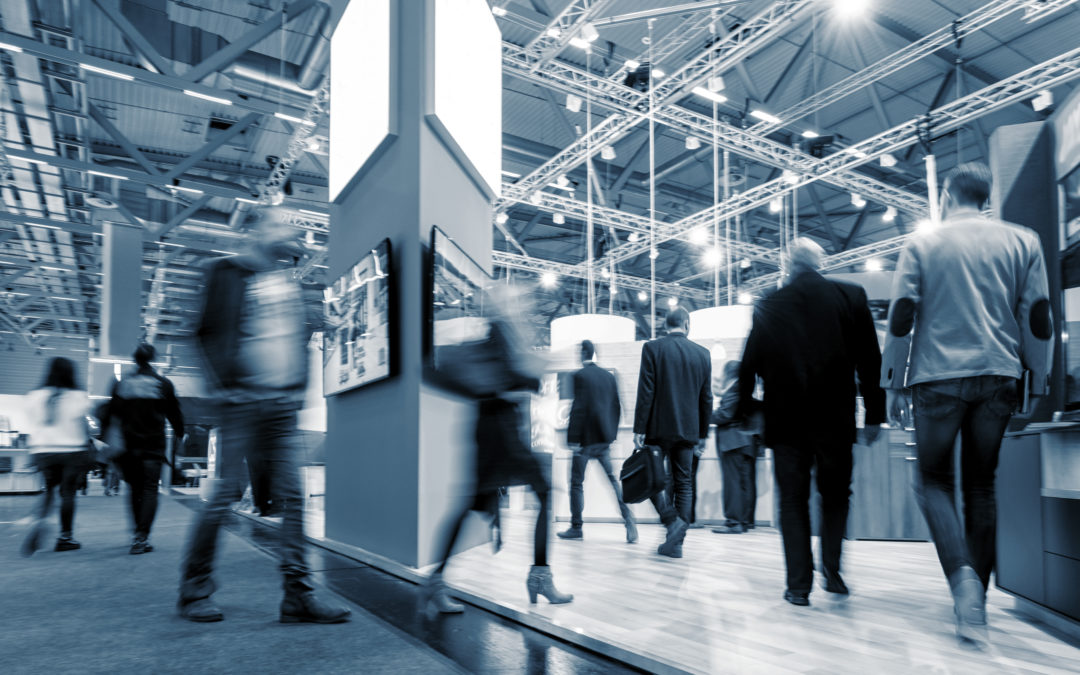Exhibitors often rely on tedious and time-consuming human observation to provide insight into which products, demos or areas of the trade show booth garnered the most attention and attendee interest. “The booth was packed” is an oft-used phrase to justify exhibiting at a trade show. The good news is simple technology now allows a streamlined approach for tracking attendee behavior and using the data to evaluate performance and guide future decisions. Proving ROI at trade shows is even more important than ever. Post-pandemic, budgets are tighter, and event managers must provide solid data to justify the cost of exhibiting. Wouldn’t it be great to offer booth traffic analytics as part of your ROI calculations? We offer TPG Tracking to our trade show clients, and many believe the cost-effective and unobtrusive technology to be so effective in providing booth metrics that they use it every time they exhibit. Questions answered by tracking technology include:
How did people move through your booth?
How people move through environments and capturing that data gives you insights to make smarter decisions about your space.
Which demos or product areas received the most interest?
Occupancy, traffic flow, and where visitors spent the most time can be measured.
How long did people stay in an area (dwell times)?
How interested were booth visitors in your products areas or demonstration kiosks? Were people just passing through, and in which areas did they stay the longest?
What was the traffic flow?
What were the peak times and the popular routes in your booth?
Benefits to Tracking Booth Traffic
- Tracking traffic takes the guesswork out of whether your display was effective and successful by providing measurable results. Tracking engagement with products and demos helps you better understand how long people are spending in your booth, and in which areas.
- Tracking provides ongoing metrics and actionable insights, which allow you to compare traffic from event to event. This allows you to make exhibit design improvements and adjust engagement strategies based on historical data.
- Tracking helps you to assign staffing and resources to high traffic times.
Larry Wyatt, TPG Event Consultant, Trainer, and Presenter, who manages booth traffic tracking for many of our clients, has this to say about the benefits of the technology and why our clients swear by it:
The real value of tracking traffic is not just a matter of learning “How many people visit our booth?!” It’s gaining real-time insights into how attendees interact with your exhibitry and your staff. TPG uses non-intrusive technology that measures how many attendees visit designated areas of your booth, when they visit, and how long the engagements last. This data lets you know which of your offerings are attracting the most attention and when the busiest periods occur. Now you can plan your in-booth staffing more effectively and even plan strategies to increase traffic to the less visited product areas. It’s all part of maximizing your trade show investment.
Summary
Measuring true Return on Investment is the prize KPI valued by trade show marketers. Given the unique nature of trade shows and the potentially long sales cycle in many B2B industries, measuring visitor volume, time spent and where, should be part of your ROI calculation. It can also help you adjust your exhibit design, booth location preferences, products featured and the number of staff you’ll need to provide the best visitor experience possible. Now when you tell your boss “Well, the booth was packed” as justification for your company’s sizable trade show investment, you can amaze and impress by proving it.
TPG Tracking provides exhibitors with an unobtrusive and cost-effective way to measure attendee behavior in order to provide ongoing metrics for future evaluations and decision making. Let’s talk tracking!


